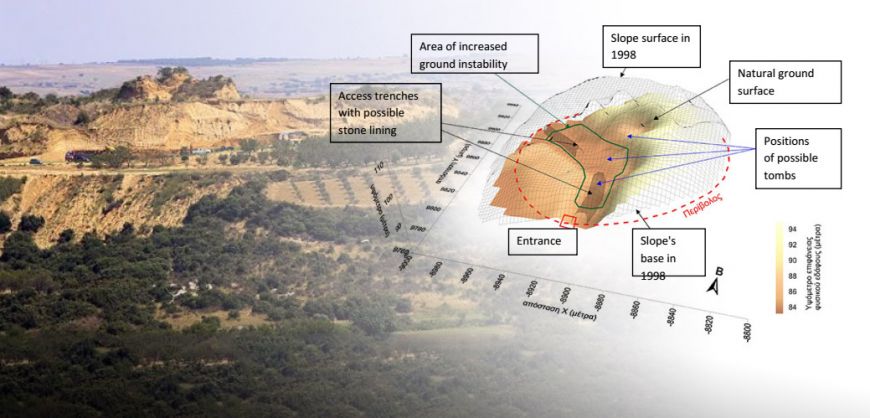Lead archaeologist Katerina Peristeri and her colleagues have appeared to be particularly cautious regarding geological work carried out at Kasta Hill at Amphipolis in the past. The time has come for geological scanning and a tender has been launched concerning which research team will be responsible for the geological study of the area. There are currently three universities vying for this role.
The tomb’s precinct is half a kilometer long and there is a strong possibility that there may be more tombs within its boundaries as is the case with the burial sites of the kings of Macedonia in Vergina. Work with x-ray scanners will begin in 10 days.
The excavation work conducted in the area has led to a significant reduction of the total height of the artificial slope. The desoiling of the area and external work so that the huge weight crushing down on the ancient tomb can be alleviated after centuries of piling up make it easier for a geological evaluation of the area. Expert scientists are being called in to aid the archaeologists.
Proto Thema had previously focused on work conducted by three geophysicists of the University of Patras – Lazaros Polymenakos, Stavros Papamarinopoulos and Athanasios Liosis in collaboration with archaeologist Haido Koukouli-Chrystanthaki. At the time, Mr. Polymenakos had refered to a “monument within a monument.”





































